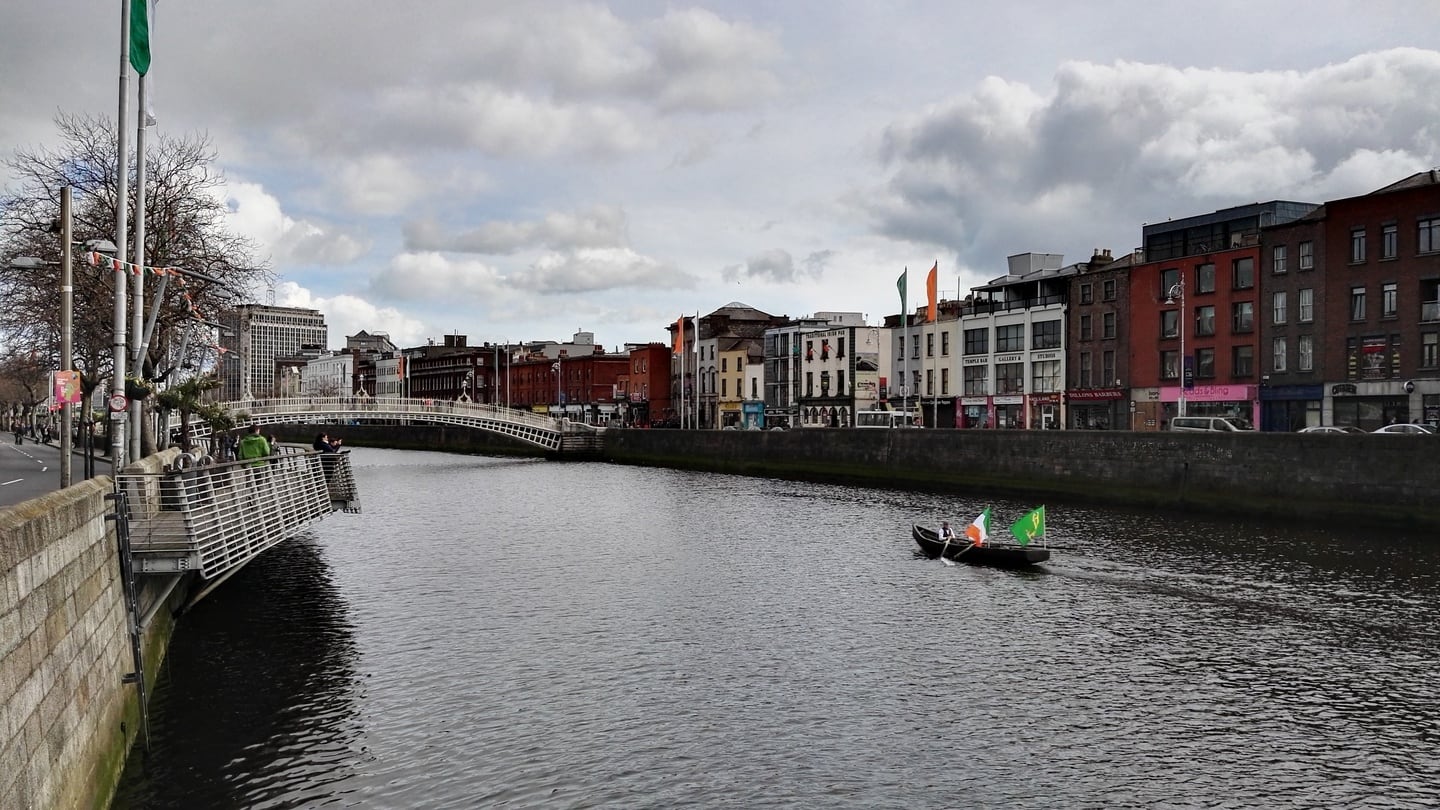Minister for Heritage Heather Humphreys was heckled by protesters during a ceremony at Moore Street in Dublin to commemorate the firing of the first shots during the 1916 Rising.
Shouts of “shame on you” and “out, out, out” came from the crowd as Ms Humphreys laid a wreath on Monday as part of a series of events across the State which commenced at 1.15pm.
Ms Humphreys has recently been criticised over her department’s stance on the protection of buildings linked to the Rising on Moore Street.
0 of 4
Numbers 14-17 had been designated a national monument but the High Court earlier this month ruled the protection should be extended to numbers 13-19 as the properties were a battlefield site.
The Minister argued only one terrace at 14-17 Moore Street, including No 16 where some of the leaders met for the last time before their execution was a national monument. Her department had argued the other buildings were “not historically important”.
A large crowd gathered at “the centre of the rebellion” in the Eastern Quadrangle of the Four Courts shortly after 1pm to mark the moment when the first shots were fired.
Sacrifices
Chief Justice Susan Denham said it was right that the Irish people “remember and commemorate” those who made great sacrifices of self, family and future for Ireland.
"In this place of justice, today, we see a physical manifestation of the consequence of the events which took place in the 20th century - sparked off by the Rising of 1916, and the executions," said Mrs Justice Denham. "One hundred years ago, on Easter Monday, this place was a major centre of that push for freedom: a centre of rebellion."
Justice Denham recalled how the gates of the Four Courts Garrison were barricaded with furniture and books which were passed through the windows.
“It is a testament to the military prowess and dedication of the local people and Volunteers who created the Four Courts Garrison, that they held out in this area for so long,” she said. “Here in this quadrangle we focus on the military aspect of the rebellion, and the bravery and loss of our local heroes.”
Mrs Justice Denham also highlighted the important role played by women during the Rising, saying that recollections of the event had often forgotten the 276 women who played an active role during Easter week.
“We also remember the 40 children who died that week,” she added. “And, of course, the civilians - who died as collateral to the fighting - or who were singled out and slain for no good reason. Close to us here 15 men were killed in what was simply a massacre.”
“The sacrifice of the Volunteers raised a spirit of defiance, and was a catalyst to change in Ireland,” she said.
Wreaths were laid simultaneously at 1.15pm - the moment the first shots were fired - at the Four Courts, on Bishop Street near the site of Jacob’s Biscuit factory, on Grand Canal Quay beside Boland’s Mill and Bakery, at St James’ Hospital, outside City Hall, in front of the Royal College of Surgeons and on Moore Street.
Wreath-laying ceremonies were also held in Ashbourne in Co Meath, Athenry in Co Galway, Cork city and Enniscorthy in Co Wexford.
‘New Republic’
Speaking at the event at the Royal College of Surgeons, Minister for Health Leo Varadkar said the 1916 Rising “did not mark an end but a beginning, it marked the first step in creating a new Republic. And we must continue that work”.
“We should not be afraid of the challenges of the future, nor should we run away from the lessons of the past,” he said.
Mr Varadkar said some of the greatest stories of heroism of the 1916 Rising took place at the college.
“One of the best snipers on the rebel side was a 23-year-old schoolteacher called Margaret Skinnider...She was wounded three times while on a mission to Harcourt Street on the Wednesday, and was carried back to this building by Bill Partridge. Her courage and determination inspired those around her. Today we celebrate her, but we shouldn’t forget how she was treated in the years after.
“When she applied for a military pension in the new Irish state she was denied one, because it defined military service as explicitly a ‘masculine’ activity. It took many years of campaigning until she received the recognition she deserved. Margaret Skinnider’s courage - not just in 1916 but in standing up for equal rights before the law, and what she believed in - should be an inspiration to us all. “












